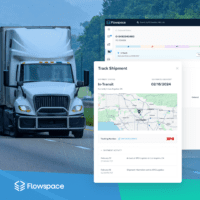
For many brands, tracking and managing physical inventory levels is the most important thing and has the biggest impact on the bottom line. When inventory starts to sell slowly—or stops selling at all—a brand needs to take notice and start making changes.
Obsolete inventory has the potential to disrupt even a very successful brand’s supply chain and fulfillment processes, as well as its profit margins. Learn more about obsolete inventory , why it matters, and what brands can do to decrease and manage obsolete inventory .
What Is Obsolete Inventory?
Obsolete inventory is inventory that a business can no longer sell due to a lack of demand. It’s also called excess or dead inventory. Products typically become slow-moving inventory, then excess inventory, and finally , obsolete inventory.
While all products are at risk of becoming obsolete, some industries—such as apparel, electronics, and furniture—are especially at risk, vulnerable as a result of new innovations, technological advances, changing and seasonal trends, and increased competition.
Different types of products have varying lifecycles. Think about the difference between food inventory and clothing inventory. While food products might become obsolete when their expiration date has passed, clothing products might become obsolete when they’re no longer in style.
Why Is Obsolete Inventory a Problem?
Any product that a business can’t sell can cut into profit margins and disrupt the supply chain and fulfillment operations of any brand. What’s more, until a brand unloads the obsolete inventory, the brand might still be incurring storage costs. The longer a company holds on to obsolete stock , the higher the lost cost will be.
According to Manufacturing.net, as much as 30% of an average brand’s stock can be obsolete at any given time, so devising a plan for handling this obsolete inventory is key to ensuring the disruption to the supply chain and fulfillment operations are minimal.
Causes of Obsolete Inventory
Navigating the complex world of inventory and supply chain management, businesses often encounter the challenge of obsolete inventory. But what leads to inventory becoming obsolete? Let’s delve into the primary causes:
Rapid Technological Advancements
In industries like electronics, the pace of technological innovation is swift. Today’s cutting-edge system can quickly become tomorrow’s outdated model. Businesses that fail to keep up with these rapid changes risk accumulating obsolete stock.
Changing Consumer Preferences
The ebb and flow of consumer tastes, especially in sectors like fashion and home decor, can lead to inventory obsolescence. What’s trendy today might not be in vogue tomorrow. Companies must stay attuned to these shifts to ensure their stock remains relevant.
Inaccurate Demand Forecasting
One of the most common culprits behind obsolete inventory is inaccurate demand forecasting. Overestimating the demand for a product can lead to overstocking, while underestimating can result in missed opportunities. Reliable forecasting tools and a keen understanding of market trends are essential to strike the right balance.
Poor Inventory Management Practices
Without efficient inventory and supply chain management practices in place, businesses can lose track of product lifecycles. This can lead to older stock being overlooked and becoming obsolete as newer stock takes precedence.
External Market Factors
Sometimes external factors, such as economic downturns, global pandemics, or geopolitical issues, can impact consumer buying behavior. These unexpected shifts can lead to a sudden drop in demand for certain products, rendering them obsolete.
Product Quality Issues
If a product is found to have quality issues or defects after being stocked, it can become unsellable. Recalls or negative reviews can also lead to a product becoming obsolete as consumers lose trust in its value.
Understanding the causes of obsolete inventory is the first step in mitigating its impact. By being proactive, businesses can adjust their strategies, ensuring their inventory remains fresh, relevant, and in line with market demands.
How to Identify Obsolete Inventory
Inventory management is critical to ensuring a healthy supply chain, and it’s incredibly important to determine which products are already obsolete in value and which products are slow – moving and might soon be obsolete , regardless of whether you are handling standard or meltable inventory.
An inventory tracking system that offers real-time and regular updates provides actionable inventory data to help you make informed stock decisions. Flowspace offers industry-leading fulfillment solutions and ecommerce software that powers insights and efficiencies for merchants selling online and ensures effective inventory tracking. The Flowspace platform offers real-time visibility into orders, inventory, and more, and offers easy-to-implement control over supply chain systems.
The real-time visibility offered by excess and obsolete inventory tracking software ensures brands aren’t caught on their heels when dealing with slow-moving and obsolete inventory and can devise a plan quickly to minimize inventory loss.
How to Get Rid of Obsolete Inventory
Obsolete inventory can be a thorn in the side of any business. It ties up valuable resources, takes up precious warehouse space , and puts a damper on profit margins. But don’t worry; we’re here to help you tackle this issue head-on with these six effective strategies to rid your business of obsolete inventory.
Creative Remarketing Strategies
Breathe new life into your old stock with creative remarketing. Consider rebranding or repackaging products to make them more appealing to customers. You can also target new customer segments by exploring niche markets or demographics that may have been previously overlooked. Limited-time promotions, such as special offers or discounts, can also help generate interest and encourage sales of slow-moving items.
Discounted Sales and Clearance Events
Everyone loves a bargain, so discounted sales and clearance events can be a powerful way to clear out obsolete inventory. Hold flash sales, create an outlet store, or dedicate a clearance section on your website. Seasonal or themed sales events can also attract customers and help you move excess stock at a reduced price.
Bundling with Popular Products
Bundle your slow-selling items with popular products to make the deal more enticing. Offer complementary product pairings, special packages, or gift sets to encourage customers to purchase. Buy one, get one free promotions or bundled discounts can also be effective ways to move excess inventory while boosting overall sales.
Liquidating through Third-Party Channels
Partner with third-party channels like online auction websites, inventory liquidation companies, or B2B and wholesale platforms to offload your obsolete stock . These channels can help you reach a wider audience and often enable you to sell inventory at a lower cost, freeing up space and resources for more profitable items.
Writing Off Obsolete Inventory
Sometimes, it’s best to cut your losses and write off obsolete inventory as a loss. Be aware of the tax implications and consider the financial impact on your business before making this decision. Writing off inventory can provide some relief and allow you to focus on more successful products.
Donating Excess Stock
Finally, consider donating excess stock to charitable organizations or community outreach programs. Not only will you be doing good for the community, but you may also be eligible for tax deductions on your charitable contributions. Donating excess inventory can help clear space in your warehouse and bolster your company’s reputation as a socially responsible business.
Implement these strategies to effectively clear out obsolete inventory, streamline your warehouse operations, and ultimately improve your bottom line.
How to Reduce & Avoid Obsolete Inventory
While brands can offload obsolete inventory by creatively remarketing items, selling the surplus inventory at a discount, bundling products with hotter items, liquidating, writing off, or even donating the excess stock , the best way to prevent obsolete inventory is to avoid excess stock in the first place.
Invest In An Inventory Management System
A quality inventory management software helps brands accurately forecast inventory needs. The Flowspace platform provides real-time insights and recommendations to help brands make smarter inventory management and allocation decisions. Inventory account accuracy is important to ensure the optimal stock level to fulfill customer demand, without wasting resources on excess inventory that might eventually become obsolete inventory. In a case study featuring Rukket Sports, Flowspace helped the company streamline their fulfillment process, leading to a 10% increase in margins and a 255% expansion in their DTC sales channel, demonstrating our capabilities in optimizing inventory management through inventory forecasting and improving e-commerce order handling.
Flowspace’s solutions can help a brand determine how quickly products are selling, how many days until a product runs out, and how current market demand compares to a previous time frame.
Leveraging Inventory Management for Seasonal Trends
Inventory management can also help brands detect seasonal trends and allow them to get ahead of both high and low demand forecasting for specific products. For example, a beauty brand might notice that demand for products with SPF starts to pick up in the spring and reaches a peak in the summer. While this trend seems obvious, inventory tracking might also help the same brand detect a smaller demand increase around the end of the year when people might be taking tropical vacations.
Keeping track of and adjusting stock for these seasonal patterns can help brands get ahead of obsolete inventory by helping them make sure they have enough products to meet demand when it’s high, but not too much product that the finished goods end up sitting idle on the shelves when the demand has decreased.
Embrace Demand Forecasting Techniques
A key to reducing and avoiding obsolete inventory lies in accurately predicting customer demand . By embracing demand forecasting techniques, businesses can make well-informed decisions on how much inventory to keep on hand. Utilize historical sales data, market trends, and seasonal patterns to create data-driven forecasts. Advanced analytics tools can further enhance your ability to anticipate fluctuations in demand, helping you adjust inventory levels accordingly and minimize the risk of obsolescence.
Establish Regular Inventory Audits and Analysis
Implementing regular inventory analysis and audits is crucial for maintaining optimal stock levels. Periodic checks on your inventory can help identify slow-moving or excess items, enabling you to take timely action to prevent obsolescence. By closely monitoring stock levels, businesses can identify patterns and trends that may contribute to inventory buildup, leading to more strategic inventory management decisions. Additionally, regular analysis can help improve inventory turnover ratios and ensure that you’re meeting customer demand without overstocking products.
Diversify Product Offerings and Strengthen Supplier Relationships
Another effective strategy to reduce and avoid obsolete inventory is diversifying product offerings and strengthening supplier relationships. By offering a wide range of products, businesses can cater to various customer needs and minimize reliance on a single product line. Collaborating closely with suppliers can also help businesses react faster to market changes and adjust orders accordingly. Building strong supplier relationships ensures better communication, faster response times, and more flexible terms, ultimately reducing the chances of accumulating obsolete inventory.
Obsolete Inventory Management with Flowspace
The food and beverage industry has unique challenges when it comes to inventory tracking and obsolete inventory , and Flowspace has unique solutions the industry needs . The Flowspace Network is among the largest networks of FDA-registered warehouses in the country, which means that a company can store its physical inventory closer to customers and reduce shipping times. That also means less time sitting in warehouses for perishable products. Flowspace offers full lot tracking and reporting capabilities in line with FDA and ISO regulations and certifications.
Find out how Flowspace can help your brand avoid inventory obsolescence and improve outcomes with connected inventory management software and a vast fulfillment network. Whether you have questions about the cosmetic or beauty supply chain, the food and beverage supply chain, or any other business operations, you can get in touch with a fulfillment logistics consultant today.
Sources:
- “What Is the Real Cost of Dead Inventory?” 2017. Manufacturing.net. June 8, 2017. https://www.manufacturing.net/home/article/13117104/what-is-the-real-cost-of-dead-inventory






